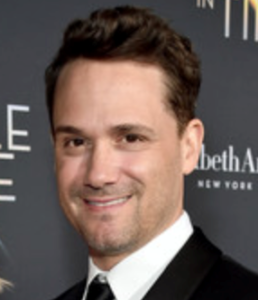 The global Netflix phenomenon When They See Us is a mini-series based on the true-life events of the Central Park Five in 1989, which revolves around five teenage boys and a rape they were wrongfully accused of. To capture the true essence of the events and shed light on the perspective of the boys, creator and director Ava DuVernay turned to an editor she trusts in Spencer Averick, who edited parts two and four of the five-hour drama.
The global Netflix phenomenon When They See Us is a mini-series based on the true-life events of the Central Park Five in 1989, which revolves around five teenage boys and a rape they were wrongfully accused of. To capture the true essence of the events and shed light on the perspective of the boys, creator and director Ava DuVernay turned to an editor she trusts in Spencer Averick, who edited parts two and four of the five-hour drama.
Part two centers on the courtroom with the boys on trial. “Ava had four or five cameras running because there were several reactions within the courtroom that were necessary to see,” said Averick. “It was the legal team, the judge, the boys, the families, and the friends in the courtroom, so there were a lot of cameras on faces that we could cut to. It was a matter of cutting to right people. Seeing the action through the boys and the loved ones’ eyes created its own tone and tension, and it was a case of using reaction shots wisely to really show the emotion on people’s faces. If I cut to the wrong reaction, it could totally deflate the scene. As an audience member and as the editor, I put myself in the audience’s shoes; I imagine sitting in a theater or watching at home, and I ask myself how long do I want to stay on this reaction? I just feel it and that basically dictates everything.”
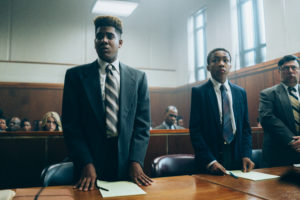
Part four was very different to part two as it focused mainly on one character. “The plot in that episode was Korey’s journey of remembering his family and what happened with his sister. When we see the fighting, we try to stay on Korey’s face as much as possible and when we cut away to the fight scene, we only see a little bit of flashes of violence and try to get across what he was seeing though his eyes,” said Averick. “We had to move a few things around to help shorten the episode. We realized that the flashbacks were not working as scripted, so we moved Korey’s flashbacks up, condensed them, and put them on all on a block together, so the audience can understand what’s going on and it’s really clear.”
Each episode within the four-part series was designed to be self-contained and the style of editing was deliberately varied, according to Averick. “It wasn’t really meant to flow together perfectly in a style. Part one is the setup, where the young boys are running around free. Then they get taken in and interrogated and it becomes intense — at which point the cutting picks up a little bit. That first part is more of a traditional edit, but in part two, Ava wanted to make it a little bit chaotic, to see the action through the characters’ eyes. When they’re in the court, there are a few more cuts than normal and a quicker pace. We wanted to portray what they were feeling.”
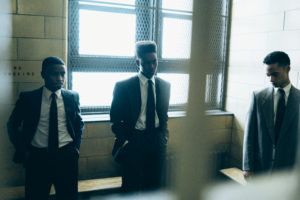
Things slow down again in part three, which tells the stories of how the boys’ families were impacted. Averick says the idea was to allow the audience to settle into the story and live with the characters. That all changes in part four, which runs for 90 minutes. “The final part felt like a separate movie. Our first cut was almost two and a half hours and it was really challenging to cut it down and to maintain Korey’s emotion, as well as to keep it interesting with only one character,” he said.
Part four shows Korey in solitary confinement and uses flashbacks to flesh out the story. “It was slow then it was fast, as there was hope that he might get transferred to a better place, but then it got worse. There was definitely a three-act structure in place,” said Averick.
While many are familiar with the Central Park Five story, most people didn’t understand the bearing it had on Korey as he was the only one that went straight to prison. “In reality there were the four and then there was Korey,” explained Averick. “Ava really wanted to devote an entire episode to him and show people what really happened. It’s not just saying an innocent boy went to prison. No, an innocent boy went to prison and here’s what happened. It was a complete nightmare. Not only is the system broken but inside of the prison is broken. It’s not running the way it should be and it doesn’t help anybody. That’s what we wanted to portray emotionally.”
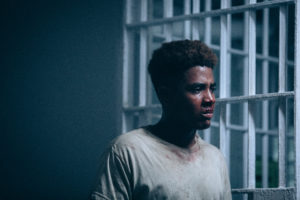
Spencer Averick has collaborated with Ava DuVernay on numerous projects, including the prison system documentary 13th, which won a 2017 BAFTA for Best Documentary and 2017 Emmy awards for Outstanding Documentary/Nonfiction Special and Outstanding Writing for Nonfiction Programming. Averick has also been recognized for his editing work on the 2014 feature film Selma.
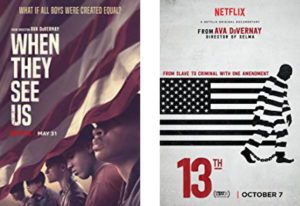
When They See Us has been one of the most watched series on Netflix since its premiere on May 31.





